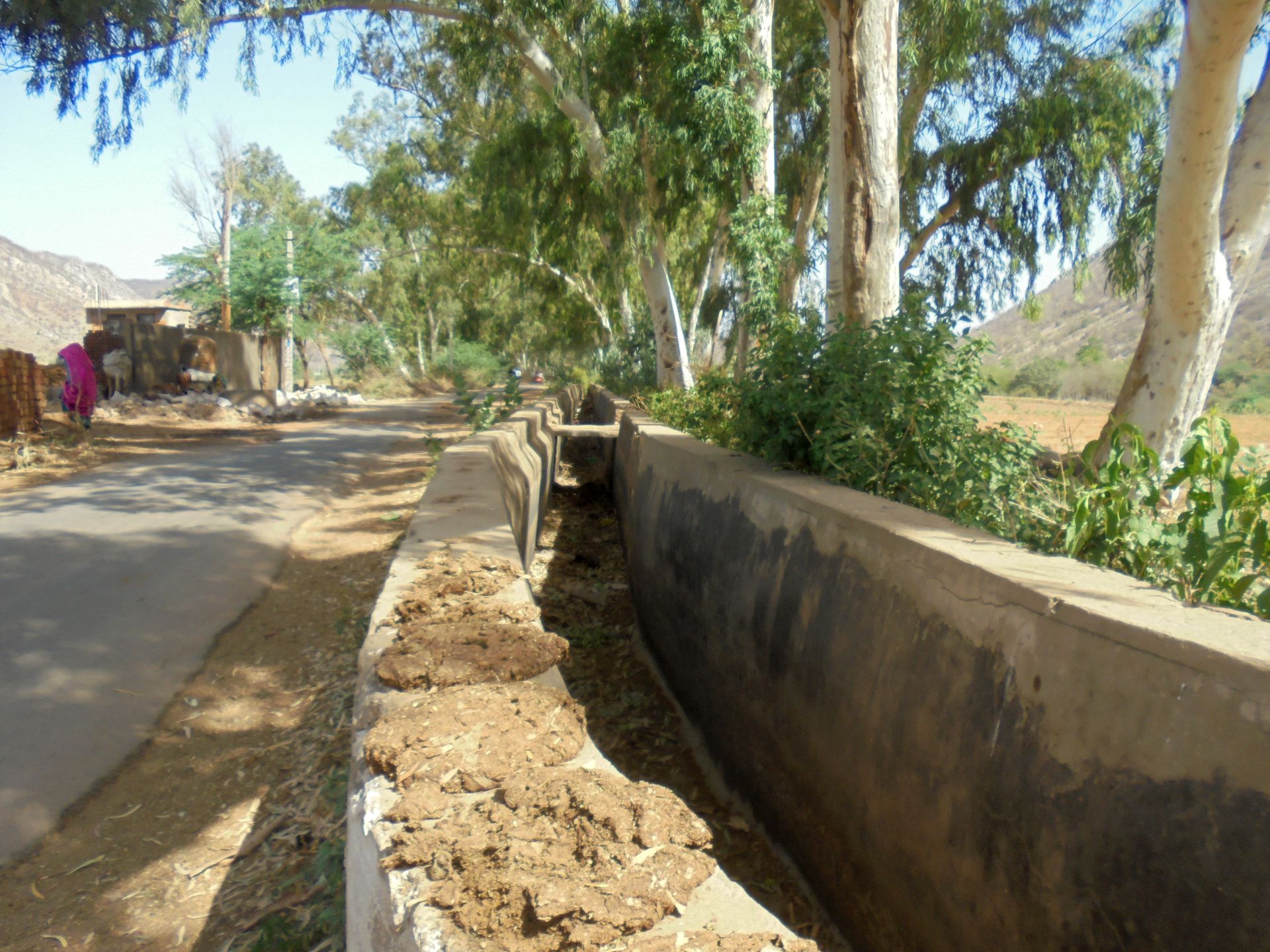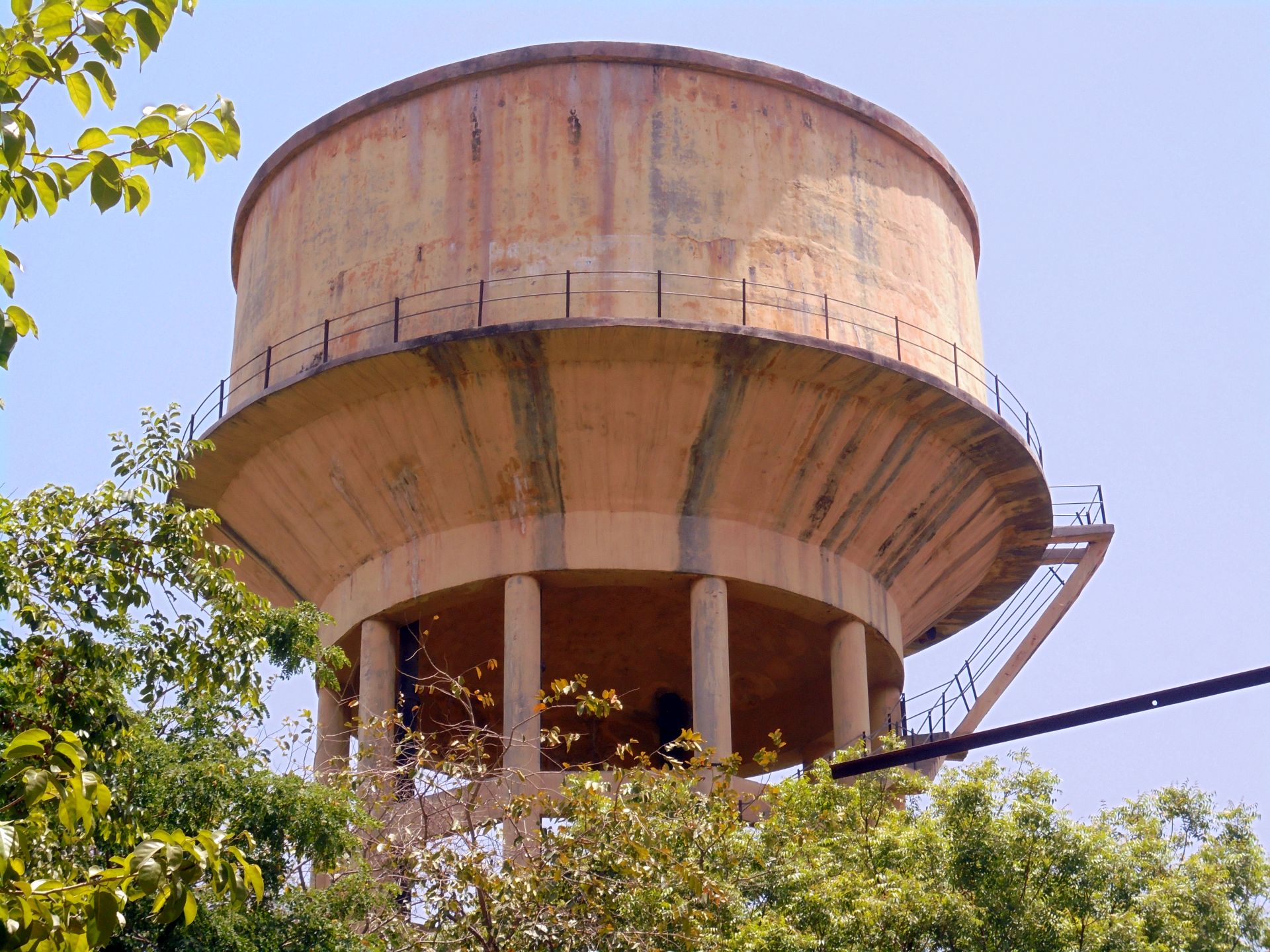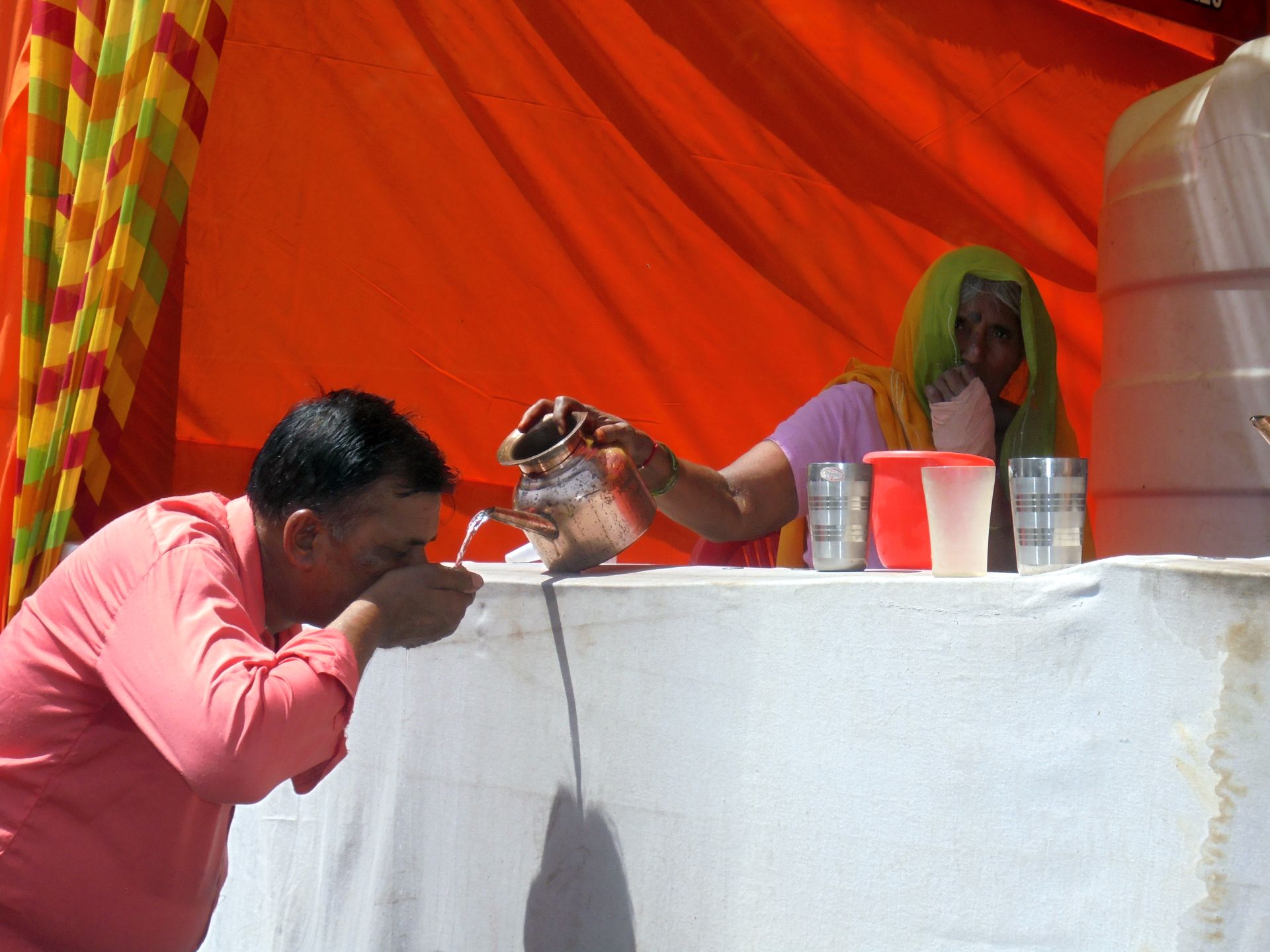Lewari, a village located around 17 km from Alwar in Rajasthan, is the site of a water conflict these days. “The production of Jayanti jaljeera, haazme ka lalantop drink (a digestive drink) has left our village parched,” says Nanak Singh, a resident. Singh is referring to the excessive quantity of water being used for manufacturing a digestive drink by a factory located in his village. The indiscriminate use of a lake bed in the village for industrial use has led to groundwater scarcity during peak summer months.
The conflict is multipronged—between upstream and downstream users as well as between those with industrial, agricultural and urban drinking water needs.
Agricultural land reels under water scarcity
Lewari is dominated by Labanas, a subaltern sect among Sikhs who settled here as agriculturists following India’s partition. Nanak Singh, now 74, recalls his ancestral village in Sukkur-Rohri area of Sindh in present Pakistan. “I was just three years old when my father’s family was forced to flee and we ended up in Alwar. The government allocated us a 15-acre plot of farmland at Lewari,” he says. “We also had the waters of Ruparel river and Jaisamand lake, locally called the bandh, adjacent to the village,” says Singh remembering a time of agricultural prosperity in the area.
“Rains are limited at 600 mm in the district lasting from the third week of June to the third week of September. Till some years ago, farmers grew bajra, guar, til, cotton, arhar and groundnut during kharif and wheat, barley, gram and mustard in rabi. They also grew onion, potato, chilly and pea using the bandh waters in small patches of farmland,” says Gopal Singh, another resident.
The bandh had its own little catchment and received water from the nearby hills dotted with dhok and white salar trees. But a major part of the bandh water comes through a canal from Siliserh, a bigger lake around 10 km away. Siliserh lake has a command area of around 1000 hectares.
The village is parched now and is reeling under acute water problem. “The bandh filled up to its brim in 1996 (27 feet). That was over 20 years ago. Since then, its waters have been diminishing. Besides this, 16 borewells in the bandh’s bed are extracting the water to cater to the Jayanti group’s factory nearby,” says Gopal. The factory has tie-ups with Mother Dairy, Safal, Del Monte and Dabur and is into agriproduct business as well as beverages.
Gopal says that where groundwater could be reached at just 30 ft in the early 1990s, there is no water even up to 500-600 ft today. People are investing about Rs 2.5-3 lakh to deepen their wells every three to four years as the water tables recede. It is a huge investment at a time agriculture is not as profitable as it used to be. “If the government does not step in and provide water, then how will we live? We are forced to migrate to the adjacent urban centres of Alwar, Bharatpur and Jaipur for daily wages,” he says.
“Villages close to Siliserh lake are resisting the allocation of water to Alwar. Further, they are not allowing water to villages which have historically been receiving Siliserh’s water, creating a conflict between old and new water rights,” says Vijay Kumar Yadav, a resident of Ghevron ki Dhani, near Siliserh. Villages are vying for its waters and also fighting the town’s attempt to divert it.
Urban areas have their share of problems
Alwar town is growing at a rapid rate and its population stands at a little over 3.15 lakh making it a class-I city as per official census report for 2011. There is conflicting demand for water allocation to various sectors like agriculture, industry and drinking and domestic water.
“The town has been expanding and the industrial areas around its periphery are showing significant proliferation. New residential areas are being developed in the peri-urban areas leading to a demand for water for drinking and domestic use,” says Resha Sharma, assistant engineer, Alwar nagar parishad.
“Alwar is totally dependent on groundwater, which is stored in overhead reservoirs and supplied by the public health engineering department (PHED) as a part of the municipal supply system. During severe shortages in summers, the PHED hires private tankers. The town’s groundwater table is showing a rapid decline,” says Manju Tyagi, executive engineer, PHED.
Groundwater table in the town stands at 40 m today (as per PHED) down from 9.4 m in 1996 (CGWB data). “Private suppliers also provide groundwater for drinking in the form of tanker loads. Water gets sold at Rs 25 for 18 litres and Rs 20 for 15 litres in the town. The tanker companies outsource this water from the irrigation wells in the rural areas nearby,” says Rakesh Yadav of Jaisreesai RO Water Supplier.
There is an insidious growth of retail private tanker suppliers. “This rampant extraction lowers the water tables in the rural area, depriving farmers of groundwater for irrigation,” says Singh.
The town does not have its surface water source. Its traditional rainwater harvesting systems like johads, paals and bandhs are in a neglected state; there are no perennial rivers that can cater to its needs.
At the beginning of summer in March, the town witnesses a lot of stress on its water resources and the competition around it intensifies.
Alwar’s planners and civic authorities have been looking at two options to meet its drinking water needs of 36.5 million litres per day (102 litres per capita a day). First, get water from Siliserh for which infrastructure in the form of pipes, pumping stations and elevated surface reservoirs have been laid. But farmers around the lake have put their foot down and are not allowing the water diversion.
The second idea is to draw water from exogenous sources like Chambal river for both rural and urban needs. While the town and the hinterlands are on opposing sides on the first option, they stand united on the second one. But the second option is fraught with problems as the river’s water sharing is a disputed one between Rajasthan and Madhya Pradesh.
If the water crises in these areas have to be solved, there is a need to look for sustainable solutions like developing groundwater recharge areas, regulating and incentivising efficient groundwater use, harvesting rainwater and restoring lakes, ponds and river systems. Till then, unfortunately, the war for water will go on.
The photo essay below provides a glimpse of the Alwar's urban and rural areas water problems.



















